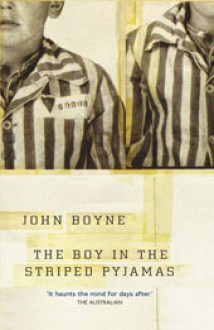John Boyne's The Boy in Striped Pyjamas will no doubt acquire many readers as a result of the subsequent film of the novel, but viewers of the latter would do themselves a favour by going back to the spare and powerfully affecting original book. Bruno is nine years old, and the Nazis’ horrific...
show more
John Boyne's The Boy in Striped Pyjamas will no doubt acquire many readers as a result of the subsequent film of the novel, but viewers of the latter would do themselves a favour by going back to the spare and powerfully affecting original book. Bruno is nine years old, and the Nazis’ horrific Final Solution to the ‘Jewish Problem’ means nothing to him. He's completely unaware of the barbarity of Germany under Hitler, and is more concerned by his move from his well-appointed house in Berlin to a far less salubrious area where he finds himself with nothing to do. Then he meets a boy called Shmuel who lives a very different life from him -- a life on the opposite side of a wire fence. And Shmuel is the eponymous boy in the striped pyjamas, as are all the other people on the other side of the fence. The friendship between the two boys begins to grow, but for Bruno it is a journey from blissful ignorance to a painful knowledge. And he will find that this learning process carries, for him, a daunting price. A legion of books have attempted to evoke the horrors of the Second World War, but in this concise and perfectly honed novel, all of the effects that John Boyne creates are allowed to make a maximum impact in a relatively understated fashion (given the enormity of the situation here). The Boy in Striped Pyjamas is also that rare thing: a novel which can affect both children and adults equally; a worthy successor, in fact, to such masterpieces as To Kill a Mockingbird and The Catcher in the Rye -- both, of course, books, dealing (as does this one) with the loss of innocence. --Barry Forshaw
show less






 7 years ago
7 years ago